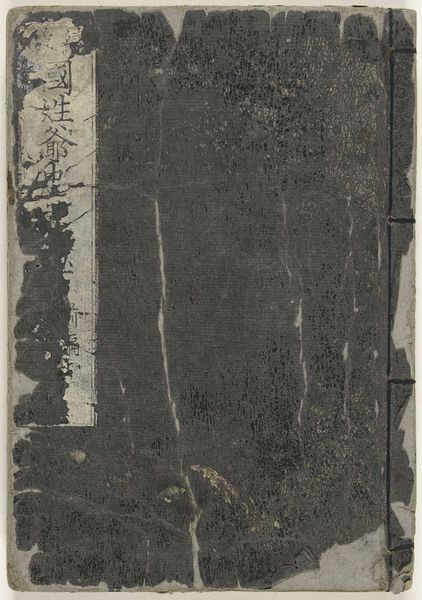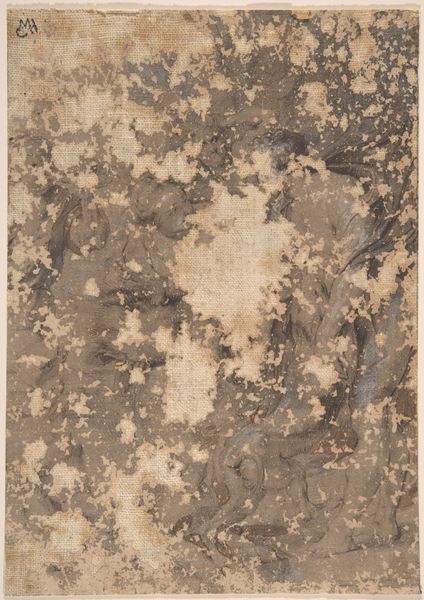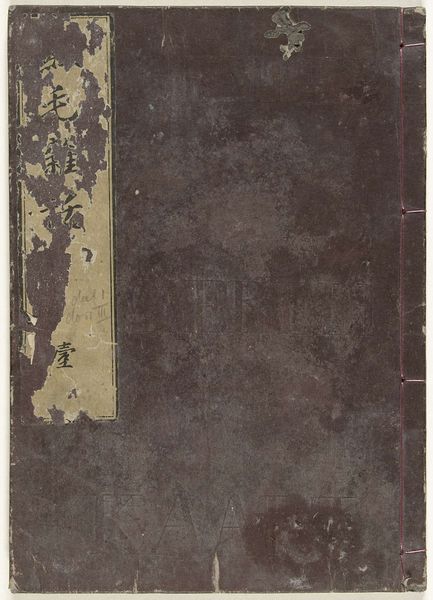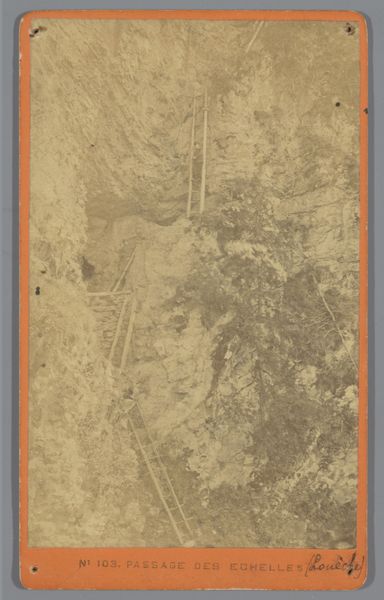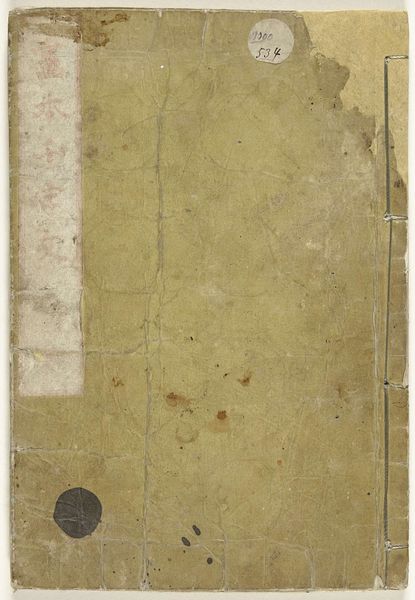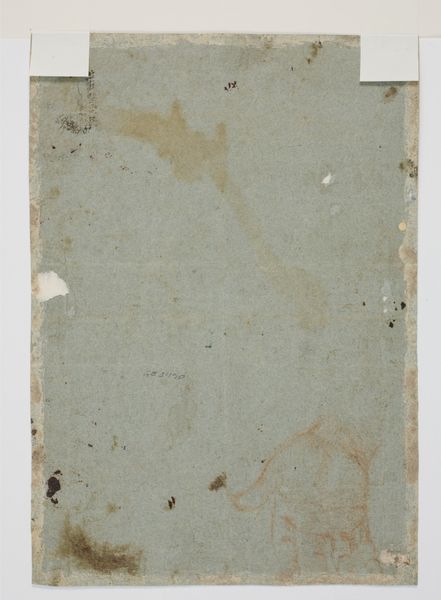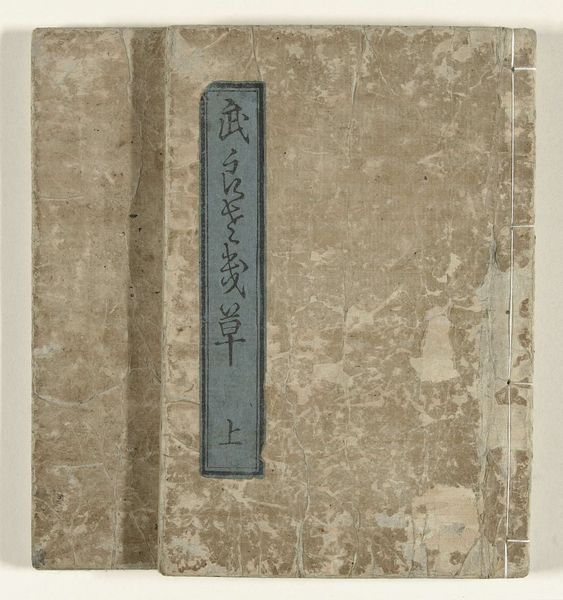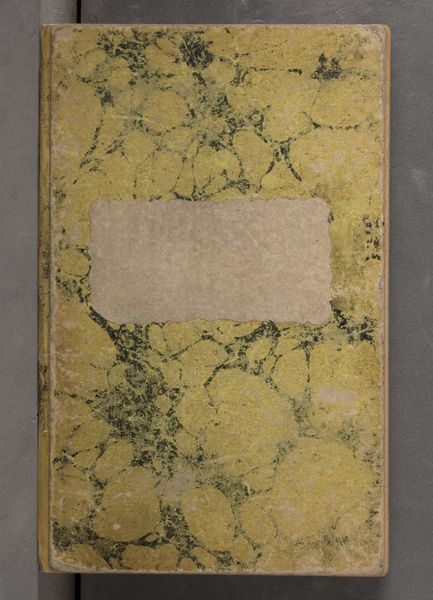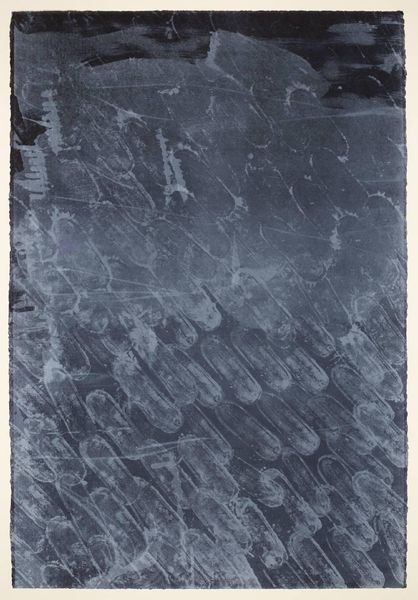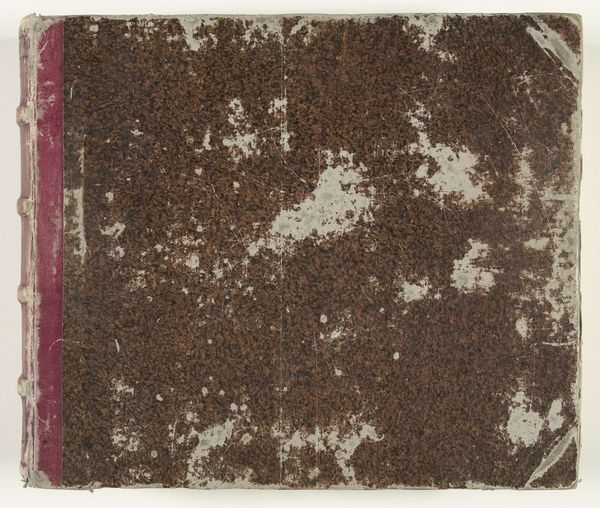
print, paper, wood
# print
#
asian-art
#
ukiyo-e
#
paper
#
japanese
#
wood
Dimensions: height 152 mm, width 106 mm
Copyright: Rijks Museum: Open Domain
Editor: So this is "Shunga album. Prentenboek over gewillige vrouwen - deel één", made around 1798 by Kitagawa Utamaro. It’s a Japanese print made with wood and paper. What strikes me first is how aged it appears, yet there is some text legible on it. What do you make of it? Curator: Well, from a historical perspective, it is fascinating to consider how Shunga, erotic art, circulated within Japanese society and beyond. Utamaro's work existed within a particular cultural and economic context, catering to urban populations. How do you think this imagery played a role, given what you know about censorship or lack thereof, during that period? Editor: I wouldn't know for sure, perhaps such erotic art was tolerated or accepted as a part of their culture at the time? Tell me more. Curator: Precisely. Examining its public role is vital. Despite not being overtly sanctioned by authorities, Shunga art operated in a gray area. It often reflected societal norms while subverting certain expectations. The very existence of this album and its survival suggest a certain level of tolerance, as you suspected. How might this context change our understanding of its significance as a visual object? Editor: It challenges my initial perception of it. I figured it was just erotic art and nothing else. So, what makes Kitagawa Utamaro an important name to remember? Curator: Utamaro refined woodblock printing and captured fleeting moments of urban life, sexuality, and entertainment districts. The detailed imagery and skillful use of line are technically impressive. But he was also participating in a visual discourse with a long history. Perhaps we could examine more examples of the artwork contained in this album, later. Editor: This piece, seemingly just an old book cover, turns out to reflect its societal standards, that's quite an insight. Thank you. Curator: My pleasure. Considering the interplay of societal forces, artistic production, and public consumption is key.
Comments
No comments
Be the first to comment and join the conversation on the ultimate creative platform.
